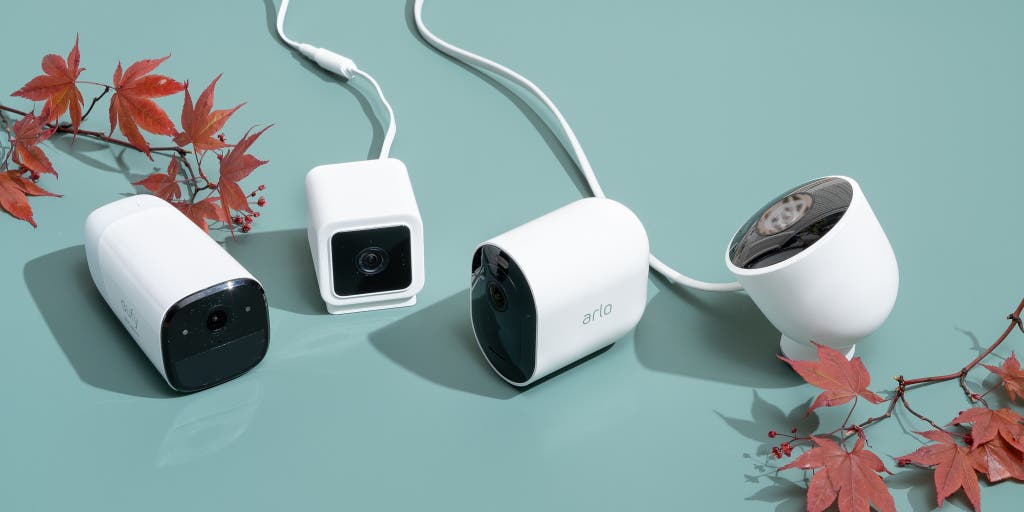Integrating security cameras into your Google Home ecosystem transforms your smart home from a convenience into a powerful security hub. With the ability to see who’s at the door on your Nest Hub, ask Google Assistant to show you the backyard, or incorporate cameras into your smart routines, the benefits are undeniable.
However, the market is flooded with options, and a critical question looms for many: which cameras actually work seamlessly with Google Home? The wrong choice can lead to frustrating compatibility issues and a disjointed user experience.
This in-depth guide cuts through the noise. We’ll break down the absolute best Google Home compatible cameras for 2025, detail the crucial features you must consider, and provide clear, step-by-step instructions for getting everything connected.
Why Integrate Security Cameras with Your Google Home?
Before diving into specific models, it’s essential to understand the “why.” Connecting a compatible security camera to your Google Home or Google Assistant setup unlocks a new level of control and awareness.
See Live Feeds on Your Smart Displays
This is the flagship feature. If you have a Google Nest Hub or Nest Hub Max, you can simply say, “Hey Google, show me the front door camera.” The live video feed from your camera will instantly appear on the screen, providing a quick and hands-free way to monitor your property.
Voice-Activated Control
Using simple voice commands, you can control your cameras without ever touching your phone. This is perfect for when you’re cooking, holding a child, or simply don’t have your phone nearby.
Centralized Management in the Google Home App
Forget juggling multiple apps for different devices. Compatible cameras appear directly within the Google Home app, allowing you to view live streams, check device status, and manage settings from the same place you control your lights, thermostat, and speakers.
Inclusion in Smart Home Routines
Google Home’s “Routines” feature allows you to trigger multiple actions with a single command. For example, you could create a “Goodnight” routine that locks the doors, turns off the lights, adjusts the thermostat, and shows you a quick view of all your outdoor security cameras.
The Best Security Cameras for Google Home in 2025: Our Top Picks
After extensive research and analysis of features, integration quality, and user feedback, here are our top recommendations for security cameras that offer the best Google Home experience.
1. Google Nest Cam (Battery): The Seamless Native Choice
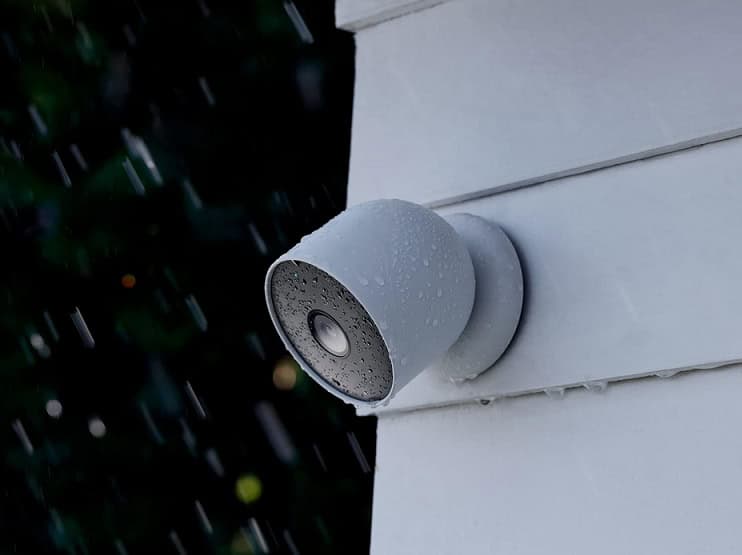
As you’d expect, Google’s own hardware offers the most flawless and deeply integrated experience. The Nest Cam is a versatile indoor/outdoor camera that sets the standard for Google Home compatibility.
- Best for: Users who want the most reliable, feature-rich, and effortless integration with the Google ecosystem.
- Key Features:
- Resolution: Crisp 1080p HDR with excellent night vision.
- Power: Built-in rechargeable battery or optional weatherproof power cable for continuous operation.
- Storage: 3 hours of free event video history. A Nest Aware subscription is required for more storage and features like Familiar Face detection.
- AI Smarts: On-device intelligence for differentiating between people, animals, and vehicles, reducing false notifications without a subscription.
- Why It’s a Top Pick: The setup is incredibly simple through the Google Home app. All features, from live viewing to AI alerts, are managed natively within Google’s environment. The integration is as perfect as it gets.
2. Arlo Pro 5S 2K: The High-Performance Powerhouse
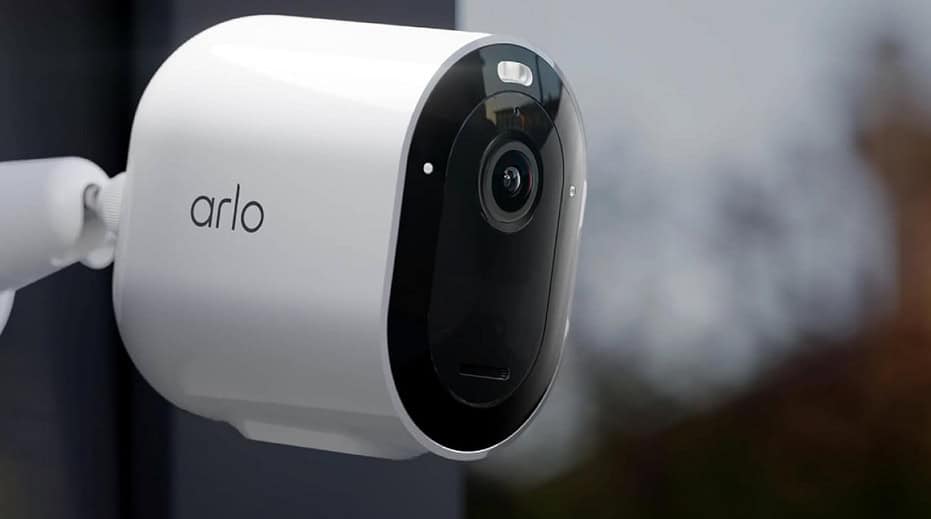
Arlo has long been a leader in the smart security camera space, and their deep integration with Google Home makes it a top-tier choice for those seeking premium features and performance.
- Best for: Users who need superior video quality, a wider field of view, and advanced features like an integrated spotlight.
- Key Features:
- Resolution: Stunning 2K video with HDR for clearer details.
- Power: Swappable rechargeable battery or continuous wired power.
- Storage: Requires an Arlo Secure subscription for cloud storage. Also supports local storage via an Arlo SmartHub (sold separately).
- Advanced Features: Color night vision, integrated spotlight, 160-degree viewing angle, and a built-in siren.
- Why It’s a Top Pick: Arlo cameras are listed as a primary partner in the Google Home app. Once linked, you can stream the live feed to Nest Hubs and Chromecast-enabled devices with simple voice commands. The quality and feature set are a significant step up.
3. Wyze Cam v4: The Unbeatable Budget Champion
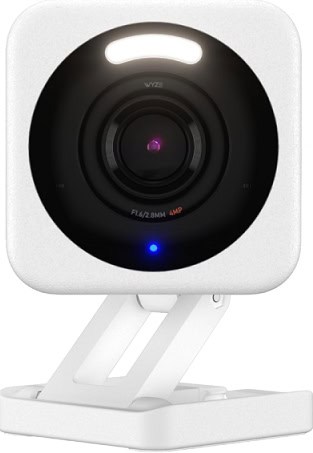
Wyze revolutionized the market by offering feature-packed cameras at an astonishingly low price point. The Wyze Cam v4 continues this tradition, providing excellent Google Home compatibility without breaking the bank.
- Best for: Budget-conscious buyers, those looking to cover multiple areas affordably, or anyone new to smart home security.
- Key Features:
- Resolution: Sharp 2.5K QHD video.
- Power: Wired USB power.
- Storage: Free 14-day rolling cloud storage for short event clips and support for continuous local recording with a microSD card (sold separately).
- Advanced Features: Color night vision, motion and sound detection, and a loud siren.
- Why It’s a Top Pick: Wyze offers one of the best value propositions in the industry. For a very low upfront cost, you get a high-quality camera that integrates smoothly with Google Assistant for live streaming to smart displays.
4. TP-Link Tapo C325WB: The Night Vision Innovator
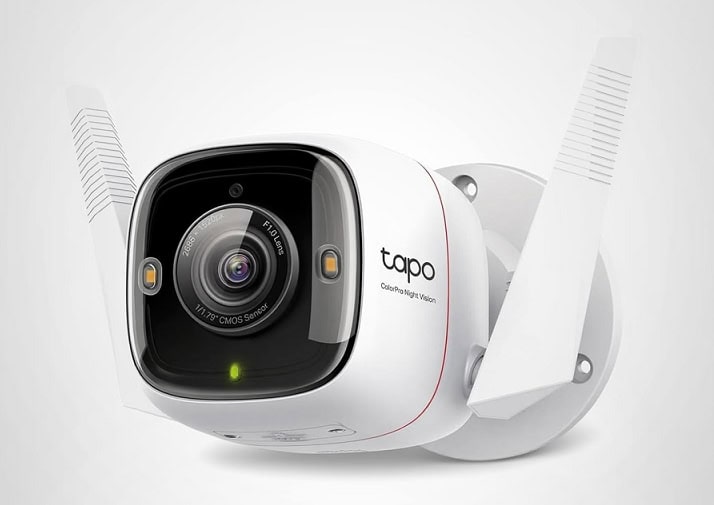
TP-Link’s Tapo line offers reliable and affordable smart home devices, and their C325WB outdoor camera is a standout performer, especially when the lights go out.
- Best for: Users who prioritize exceptional night vision clarity for outdoor surveillance.
- Key Features:
- Resolution: 2K QHD (2688×1520).
- Power: Wired AC power.
- Storage: Local storage via a microSD card (up to 512 GB) or an optional Tapo Care cloud subscription.
- Advanced Features: Revolutionary ColorPro Night Vision technology that provides full-color video in extremely low light without needing spotlights, plus customizable AI detection.
- Why It’s a Top Pick: While many cameras offer color night vision using a bright spotlight, the Tapo C325WB uses a more sensitive sensor and larger aperture to achieve it passively. Its Google Home integration allows for easy voice-controlled streaming to your Nest Hub or Chromecast.
Key Features to Look For When Choosing a Camera
Beyond the brand name, here are the critical technical specifications to compare.
Video Resolution (1080p vs. 2K vs. 4K)
Higher resolution means a clearer, more detailed image. 1080p (Full HD) is the baseline standard. 2K (QHD) offers a noticeable improvement in clarity, making it easier to see details like faces or license plates from a distance. 4K is the best available but often requires more internet bandwidth and storage.
Power Source: Wired vs. Battery-Powered
- Wired: Offers continuous power, so you never have to worry about charging. It allows for 24/7 recording (if the feature is supported). The downside is the need for a nearby power outlet.
- Battery-Powered: Incredibly flexible placement, with no drilling for cables required. The downside is the need to periodically recharge the batteries.
Storage Options: Cloud vs. Local
- Cloud Subscription: Your video clips are stored securely on the manufacturer’s servers. This is safe from theft (as a thief can’t steal the cloud) but usually requires a monthly fee (e.g., Nest Aware, Arlo Secure).
- Local Storage: Video is saved to a microSD card in the camera or a connected base station. This is a one-time cost for the card and has no monthly fees, but the storage device could be stolen or damaged along with the camera.
Smart AI Detection
Modern cameras use AI to reduce unwanted alerts. Look for cameras that can specifically detect People, Packages, Vehicles, and Animals. This ensures you’re only notified about what truly matters.
How to Connect Your Security Camera to Google Home: A Step-by-Step Guide
Connecting a third-party camera (like Arlo or Wyze) is a straightforward process handled within the Google Home app.
- Set Up Your Camera First: Before anything else, install your camera and set it up completely using its own dedicated app (e.g., the Arlo Secure app or the Wyze app). Make sure it’s online and functioning correctly.
- Open the Google Home App: On your phone or tablet, open the Google Home app.
- Add a New Device: Tap the ‘+’ icon in the top-left corner.
- Select ‘Set up device’: From the menu, choose this option.
- Choose ‘Works with Google’: This section is for linking third-party services. You’ll see a search bar and a list of brands.
- Find Your Camera’s Brand: Search for or scroll to find the brand of your camera (e.g., “Arlo,” “Wyze,” “TP-Link Tapo”).
- Authorize the Link: You will be redirected to a login page for that brand. Log in with the same username and password you used to set up the camera in its native app. This authorizes Google to access your camera.
- Assign to a Room: Once linked, Google Home will discover your camera(s). You can then assign each camera to a specific room in your home (e.g., “Living Room,” “Front Porch”). This makes voice commands more intuitive.
That’s it! You can now use voice commands to view your camera’s feed.
Important Compatibility Note: What About Ring and Blink?
A very common point of confusion involves two of the biggest names in home security: Ring and Blink.
Unfortunately, Ring and Blink cameras do not work with Google Home or Google Assistant.
Both Ring and Blink are owned by Amazon. As such, they are designed to integrate exclusively with Amazon’s own smart home ecosystem, Alexa. This is a classic case of walled gardens in the tech world; Amazon keeps its products tightly integrated with its voice assistant, just as Google does with Nest.
Frequently Asked Questions (FAQ)
Can I use my Google Nest Hub as a security camera?
No, the Google Nest Hub and Nest Hub Max cannot be used as standalone security cameras to monitor your home while you are away. While the Nest Hub Max has a built-in camera, its primary function is for video calls (Google Duo/Meet) and brief “Home Monitoring” check-ins, not for continuous security recording or motion detection alerts like a dedicated Nest Cam.
Do I need a subscription for my camera to work with Google Home?
No. The core functionality of streaming your camera’s live video to a Google display works without a subscription. However, a subscription (like Nest Aware or Arlo Secure) is typically required to unlock advanced features like extended video history, cloud storage, and specific AI detection capabilities (like familiar faces).
Can I view my camera feed 24/7 on a Nest Hub?
Most battery-powered cameras will time out after a few minutes of live streaming to a display to conserve power. Wired cameras are more likely to support continuous streaming, but the functionality can vary by brand. Native Google Nest Cams (when wired) provide the most reliable experience for longer viewing sessions on a Nest Hub.
Which is better: Google Nest cameras or Arlo cameras?
This depends on your priorities. Google Nest offers the most seamless, “it just works” experience within the Google ecosystem. Arlo often provides superior hardware specifications, such as higher resolution video (2K/4K), wider viewing angles, and swappable batteries, making it a better choice for performance-focused users who still want great Google Home integration.
What are the best voice commands for my security cameras?
- “Hey Google, show me the [camera name].” (e.g., “…show me the backyard camera.”)
- “Hey Google, what’s on the [camera name]?”
- “Hey Google, play the [camera name] on the [TV name].” (Works with Chromecast-enabled TVs)
- “Hey Google, stop casting.”
Learn more about Smart Security
